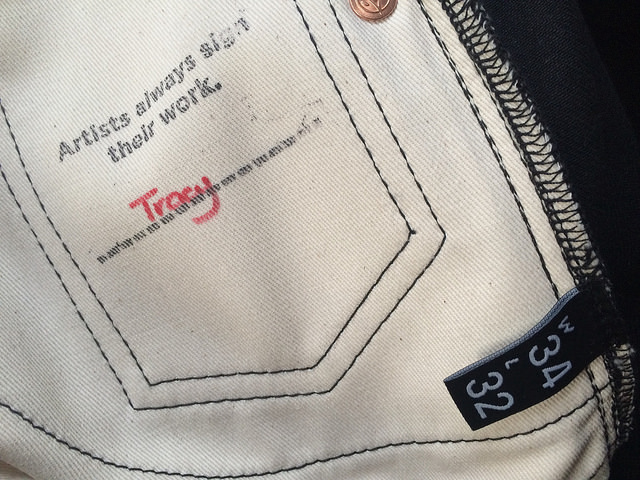Unlock the Magic in Your Story Now
Get the Free 20 questions to Ask Before Launching Your Idea workbook when you sign up for occasional updates.
Get the Free 20 questions to Ask Before Launching Your Idea workbook when you sign up for occasional updates.
The Two Rules Of Good Marketing
filed in Marketing, Story Skills, Storytelling

The best marketing does two things:
1. It empowers people to make decisions now that they won’t regret later.
2. It helps people to do the things they want to do.
If you’re helping the people you serve to do both of these things, you can proudly say you’re a good marketer.
Image by Eric Shoniya
Share this article
Build A Trust Engine
filed in Marketing, Strategy, Success

In the golden age of the advertising businesses of all sizes relied on ads to promote and sell their products. Giant corporations reached us via TV and whole page newspaper ads. Small businesses got our attention by placing small ads in the local newspaper. In the past advertising allowed average products to gain traction. Now we block and ignore.
When conventional advertising became less effective, many businesses migrated to social media platforms. The promise was that targeted promotion would enable us to reach more customers for close to free. While it’s easier to target and reach prospective customers, there is no guarantee that more people will be won over. That doesn’t stop us spending the majority of our resources trying to reach potential customers, and relatively few to convert or retain them. According to Econsultancy, for every $92 we allocate to creating awareness, we spend $1 on converting the customer.
How could we invest our resources wisely?
As is often the case the clues lie in understanding what’s unchanging about people. We still buy things the people we trust are buying. We eat in the places our friends tell us serve good food. We know where to get the best coffee because our neighbours tell us. We do things we see others doing. We always have done. We always will do.
Lasting success isn’t built around launching one PR campaign after another. It’s powered by trust. Whenever you see a business that’s endured look for the trust engine that’s driving its success.
How To Build A Trust Engine
1. Care more than the competition.
2. Make the best product.
3. Give your customers a story to tell.
4. Make it easy for them to tell that story.
In the quest to do work we’re proud of trust trumps awareness every time.
Image by Spyros Papaspyropoulos
Share this article
The Opportunity Cost Of Pursuing New Opportunities

Time. We can sell it. We can buy it. But we can’t get it back. And yet when it comes to resourcing opportunities, we sometimes believe we can have it all. All we need is to be disciplined about how we spend our time. When we choose to pursue a new project or goal we’re investing more than time—we’re also devoting energy to that new opportunity. And the energy required to do work we’re proud of is as finite as time.
Questions for you
If you decide to do this what are you deciding not to do?
How well can you keep doing this if you start that?
What additional resources will you need?
Which of these projects is getting you closer to your goals?
It’s not an opportunity if it isn’t helping you to get to where you want to go.
Image by Jason Tester
Share this article
What’s At Stake For Your Customer?
filed in Marketing, Storytelling, Strategy

We often use customer insights to inform product and service development. Throughout the process, our goal is always to empathise with the customer. But sometimes the language we use stops us from achieving that goal. For example, it’s harder to imagine a particular person with a problem by making a list of customer ‘pain points’, than it is to think about what’s wearing a customer down.
For example, we might list the pain points of someone (like my mum), who has trouble opening jars with her arthritic hands, as impaired grip, limited mobility and so on. But we form a more complete picture when we do the work of understanding the impact of those pain points. We get a sense of the emotional cost of living with those pain points when we think about what’s at stake for the person we want to serve.
Here’s how this works in practice.
Two Customer Insights Exercises
Exercise A. Make a list of your customers’ frustrations.
Exercise B. Stand in one customer’s shoes and fill in the blanks in the following sentences.
I’m tired of doing [X] and not achieving [Y].
I’m tired of feeling [X] and never being [Y].
I’m tired of being [X] and not doing [Y].
I’m tired of saying [X] and never getting to [Y].
When we do exercise B, instead of a list of pain points, we get an understanding of the customer’s story and her internal narrative. “I’m tired of having to ask for help and not being able to cook properly because I can’t open jars. When I can’t open a jar I feel like I’m getting weaker and losing my independence.”
What’s your customer’s story?
How does your product or service help your customer do less of X and experience more of Y?
That’s the story your customer wants and needs to hear.
Image by Kirsty Andrews
Share this article
The Power Of Assumptions

It was standing room only on the 109 tram, as it always is at five o’ clock on a Monday evening.
As more passengers boarded the crowded carriage, a man holding a briefcase got up from his seat to let the woman standing in the aisle next to him sit down. She declined. He persisted. She flatly refused. He insisted. There was a standoff. The man didn’t want to lose face. The woman didn’t want to appear weak.
The man assumed he was doing the right thing. And in ninety-nine out of a hundred situations, he was—just not this time for this woman. Once he committed to a course of action it was difficult for him to change tack. It’s never as easy to back down in the moment as we think it will be.
Our assumptions drive many of our business decisions. Those beliefs shape our business development, influencing strategy and tactics. It’s wise to check if those assumptions align with our customers’ desires before we commit to acting on them.
Image by Mr. Benben
Share this article
Proud Work

When I was growing up, work was a means to an end for many of the breadwinners in our neighbourhood. Work meant food in the bellies and clothes on the backs of the people you loved. There is both dignity and joy in providing, especially when you’ve gone hungry and shoeless, as my father often did when he was a child. I still remember how proud my dad was when he could afford to pay for me to be fitted with a pair of Clark’s black patent leather shoes.
Today, many of us aspire to do more than only provide. We want to do meaningful work. We want the hours we devote to working to stand for something—to be more than an exchange of time for money. If we are driven to find meaning in our work, then we must be clear about not just what we want to do, but who we want to serve and how we want to go about doing it.
Once money is no longer our only driver, we need to discern what enables us to do our best work, and then to detail what those projects or clients we want to work on and with look like. There is no single right formula—no one-size-fits-all answer. There is only your answer.
I have worked in places where the waitress loved her job more than the CEO loved his. And, where the nursing assistant—the least qualified person on the team, made as much impact on patients as the entire medical and nursing staff put together.
Now more than ever we are responsible for the kind of work we do. And more of us are charged with creating the places and circumstances that enable other people to do work they’re proud of.
As Lewis Caroll said; ‘If you don’t know where you are going any road will get you there.’ Once you do know where you want to go, and why, you can proudly choose the path that’s right for you. When you do the right things the way you want to do them, you’ll be surprised how loud your whispers become.
Image by Russell Davies
Share this article
What’s On Your ‘Not To Do’ List?

Back in 2007, the New York Times called Apple’s decision not to add a mechanical keyboard to the iPhone their billion dollar gamble). That decision worked out pretty well for Apple.
Some of the most successful ideas in the world were born from a conviction about the things the creator, founder or company would not do.
Pixar decided not to make animated musicals.
James Dyson decided not to make vacuum cleaners with bags in them.
Nino and Sisto decided not to expand beyond their single successful café.
What are you gladly forsaking to become the best at what you do?
Image by K.H. Reichert
Share this article
Easy Does It
filed in Marketing, Strategy, Success

Our expectations about the quality of products have increased exponentially with our ability to perfect the things we produce. When quality improves our tolerance for mistakes plummets. Interestingly, the same isn’t true for human interactions. Even though digital technology has enabled degrees of efficiency beyond our wildest dreams our expectations about how people will use it to serve and connect with us have dropped. Product reliability is a given. Great service and emotional intelligence are not.
Now when you respond to an email in good time or simply reply at all, people are blown away. When you take the time to listen to a complaint and acknowledge someone’s feelings, they are not just satisfied, they are delighted. When you go the slightest bit out of your way to resolve someone’s problem, you make a customer for life.
We spend much of our time working on perfecting the hard thing and not enough time doing the easy thing. People want to be seen and heard just as much, if not more, as they want things to work. Helping is both priceless and underrated.
Image by Jessica Lucia
Share this article
The Assumptions Checklist

Our decisions are rarely based on objective information. And even when we do have ‘good data’, it’s coloured by why, who and how it’s collected. Often our decisions are based on assumptions. We accept something as true, without proof. We make many of these assumptions with a scarcity mindset. We kill good ideas too soon by assuming there is not enough of this or too much of that to make a difference. And pursue bad ones for similar untested reasons.
We can challenge our assumptions by compiling three lists to answer three simple questions:
A. What assumptions am I making?
1, 2, 3, 4, 5…..and so on.
B. What if what I’m assuming is not true?
1, 2, 3, 4, 5…..and so on.
C. How can I test these assumptions?
1, 2, 3, 4, 5…..and so on.
We create a more hopeful set of expectations by calling out the beliefs that are holding us back.
Image by P. Thirumalaisamy
